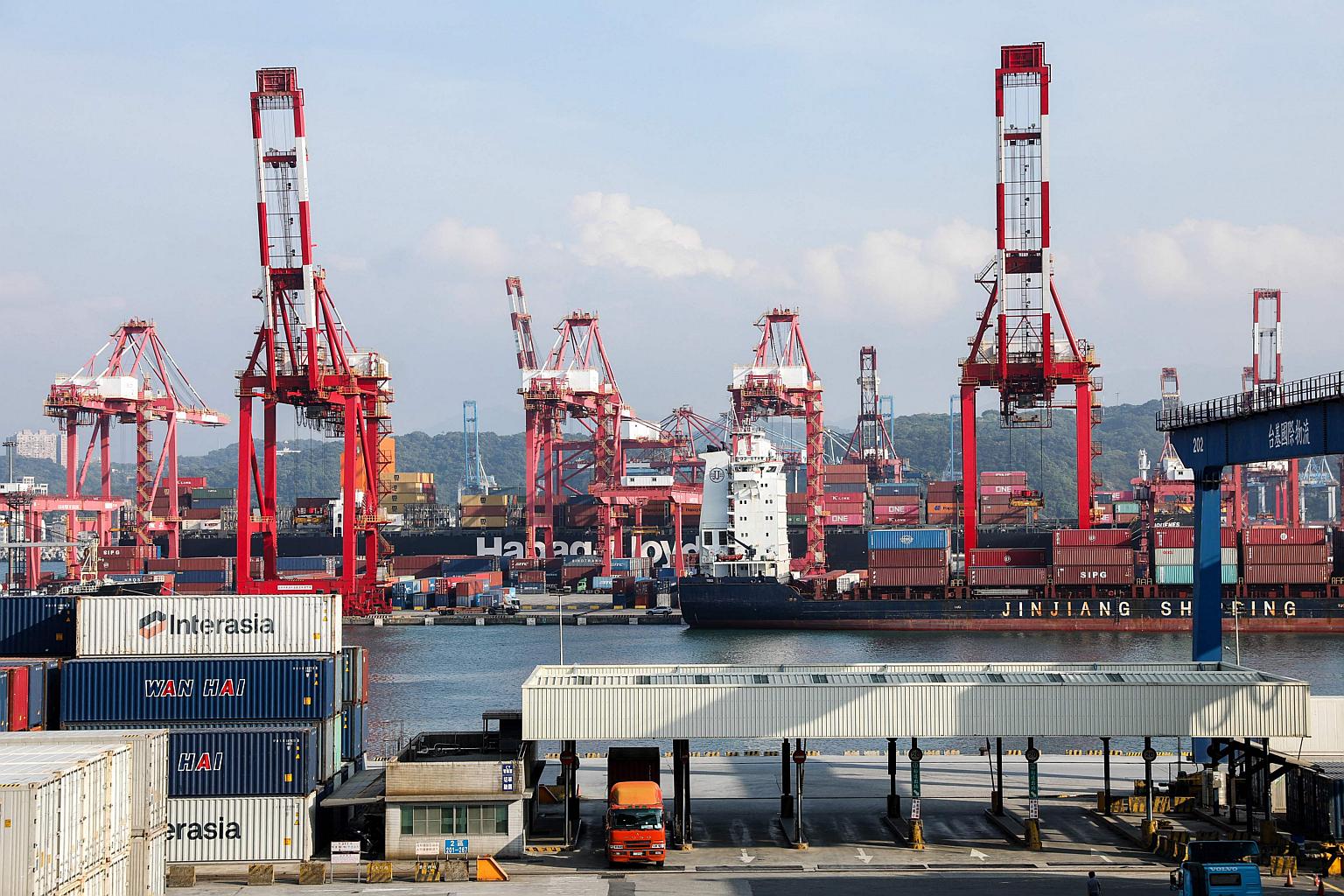Supply chain 'normal' appears on horizon; with shipping lines' earnings moderating
Sign up now: Get ST's newsletters delivered to your inbox

Fragile supply chains are heading into another holiday season vulnerable to shocks.
PHOTO: AFP
Follow topic:
NEW YORK - In supply chain circles battered by two years of chaos, the word "normal" is creeping into the outlook for 2023. According to the latest logistics managers' index, "September's future predictions hint at normalisation and a return to business as usual over the next year".
That is not to say everything will soon be running smoothly across the global economy. Companies still struggle with shortages of parts and workers. Fragile supply chains are heading into another holiday season vulnerable to shocks ranging from freakish weather and dockworker strikes to China's Covid-19 lockdowns and Russia's war in Ukraine.
"International transportation capacity has improved markedly," said associate professor of supply chain management Jason Miller at Michigan State University. He cautions about getting too optimistic about the speed of the recovery.
For United States companies trying to secure raw materials and components, "things are still bad and have not improved substantially", he said.
Analysts at Copenhagen-based Sea-Intelligence said in a report last week that about half of the shipping congestion has been resolved, and by one measure, "a full reversal to normality should come in March 2023".
Another Sea-Intelligence model that compares the current situation to snarls experienced in 2015 concurred that "normal" is within reach in early 2023, barring any more unexpected disruptions.
Evidence of the shipping slowdown is also seen in weekly traffic figures at the busiest US port in Los Angeles, where 17 container ships were berthed on Thursday, compared with about 30 in early 2022. The downturn has been gradual and nearby intermodal depots are still working through backlogs, but weekly import volumes lately are coming in lower than year-earlier levels.
Part of it can be blamed on earlier-than-expected inventory stockpiling this summer, as well as the rerouting of goods through East Coast ports to avoid a possible strike.
The reason has as much to do with demand as it does improvements on the supply side. "September trade has been characterised by weak demand for goods from China through Europe and North America," according to head of Kiel's trade gauge Vincent Stamer.
But there is still work to be done to free up cargo that is bogged down globally on waiting ships. Bloomberg Economics was among several groups of private-sector forecasters to publish a supply stress monitor, and a Bloomberg global heat map shows conditions cooling from the pressures that were flashing red at the start of this year.
An Oxford Economics indicator of supply strains in the US peaked in February and has slowly but steadily improved through September. It helps that consumers in developed economies are cinching their purse strings.
"Supply chain conditions should stay on a more encouraging trajectory in the final stretch of 2022 and in 2023. One of the benefits of weakening demand is it will ease stress in supply chains," said Oxford's lead US economist Oren Klachkin.
By some measures, the untangling of transport snarls is happening just as fast as the system knotted up in 2021. That is not welcome news for companies that have prospered in the chaos. Spot rates for shipping containers have plunged about 60 per cent in 2022 as carriers struggle with the opposite problem they faced in 2021 - excess capacity.
Like airlines that cancel half-booked flights, the carriers are reducing the number of individual voyages in a practice called "blank sailings" - or cutting entire service loops altogether - to match their available space with demand, according to figures from Drewry.
For cargo owners, the falling rates are soothing the sting of the record-high prices of the past two years. But it is also bringing an end to the most profitable period in container shipping history. Moody's Investors Service last week cut its outlook for the industry to negative from stable as the supply-demand imbalances lurch back to the carriers' disadvantage in a weaker global economy.
New ships launching in 2023 and 2024 may hasten the industry's reversal of fortunes. The order-book-to-fleet ratio of 28 per cent is the highest since 2010, according to Moody's, and that increase in capacity will exceed projections for global trade volumes.
"Although service reliability issues and elevated freight rates will likely persist into 2023 as the transportation ecosystem continues to right itself, we believe that carriers' earnings have now peaked as an increased supply of vessels meets weakening demand," the Moody's report stated. BLOOMBERG

